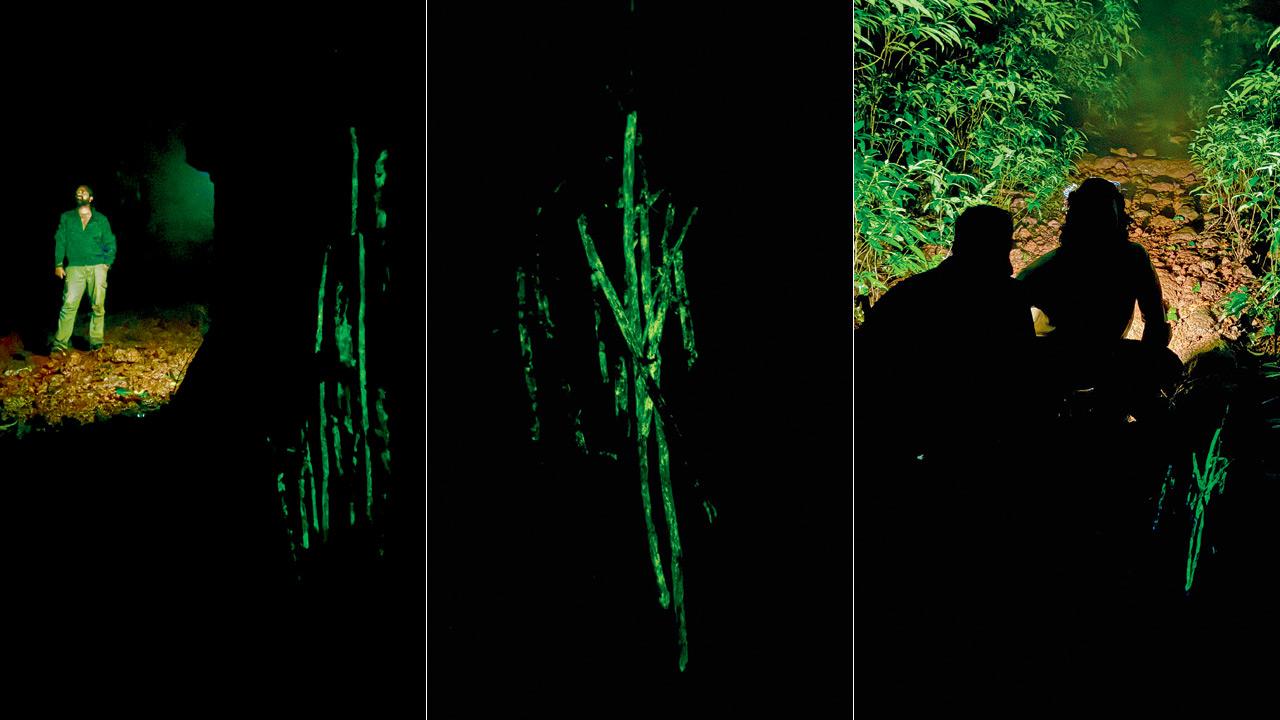
Bioluminescence has once again been observed in the biodiversity-rich Matheran forest by Mumbai-based naturalists and a wildlife photographer. During this natural phenomenon, large patches on dry wood and fallen branches emit a soft glow, transforming the dark forest into a truly magical spectacle. Naturalist and wildlife photographer Mahesh Yadav had gone to the Matheran hill station recently with his friend Nilesh Mane, who is also a naturalist, and during their herping trail in the night, the nature enthusiasts were lucky to spot the bioluminescent fungi in Matheran.
It may be noted that forests of Matheran, a hill station in the Western Ghats of Maharashtra, are known for their spectacular display of bioluminescent fungi. Yadav said, “This natural phenomenon is most prominent during the monsoon season, typically from July to September, when the high humidity and moisture in the air create ideal conditions for the fungi to thrive.
During our recent visit to Matheran, we were lucky to spot bioluminescent fungi. The glow is emitted from the mycelium, the vegetative part of the fungus, which grows on decaying leaves, twigs, and logs on the forest floor. These ‘glowing forests’ are a magical sight, transforming the landscape at night. The most common types of bioluminescent fungi found in the Western Ghats, including Matheran, belong to the Mycena genus.” Matheran is recognised as an ecological hotspot with exceptional biodiversity. The plateau supports more than 180 species of birds, nearly 140 species of butterflies, numerous orchids, and several endemic amphibians, such as Indirana leithii.
Naturalist Nilesh Mane said, “Its semi-evergreen and moist deciduous forests, interlaced with streams and valleys, form a complex habitat that supports a wide spectrum of flora and fauna. This richness not only reflects the conservation value of Matheran but also demonstrates the ecological functions of intact forest ecosystems` nutrient cycling, water regulation, and the maintenance of microhabitats essential for species survival. High monsoon humidity, dense forest canopy, and continuous accumulation of organic litter also provide an ideal microhabitat for bioluminescent fungi. Primarily of the Mycena genus, these fungi colonise decaying leaves and wood, with their mycelia producing a soft green glow during the rainy season, a striking example of how Matheran’s biodiversity sustains even highly specialised organisms.”
Matheran, a picturesque hill station near Mumbai, is known for its charming toy train and scenic beauty. It also attracts wildlife enthusiasts with its rich variety of endemic birds and numerous snake species. However, increased tourism has led to overcrowding and littering, which threatens its unique biodiversity. Despite being a pollution-free destination due to the absence of vehicles, human activity has impacted the area.
In Maharashtra, bioluminescence is observed in the Western Ghats, including Bhimashankar Wildlife Sanctuary, Tamhini Ghat, and Amboli Ghat. Wildlife researchers and enthusiasts stress the need to raise awareness and promote responsible tourism to protect these vital ecosystems.
What is bioluminescence?
Bioluminescence is the emission of light by living organisms through a process where luciferin molecules react with oxygen, aided by the enzyme luciferase. This reaction produces oxyluciferin, which emits visible light.


